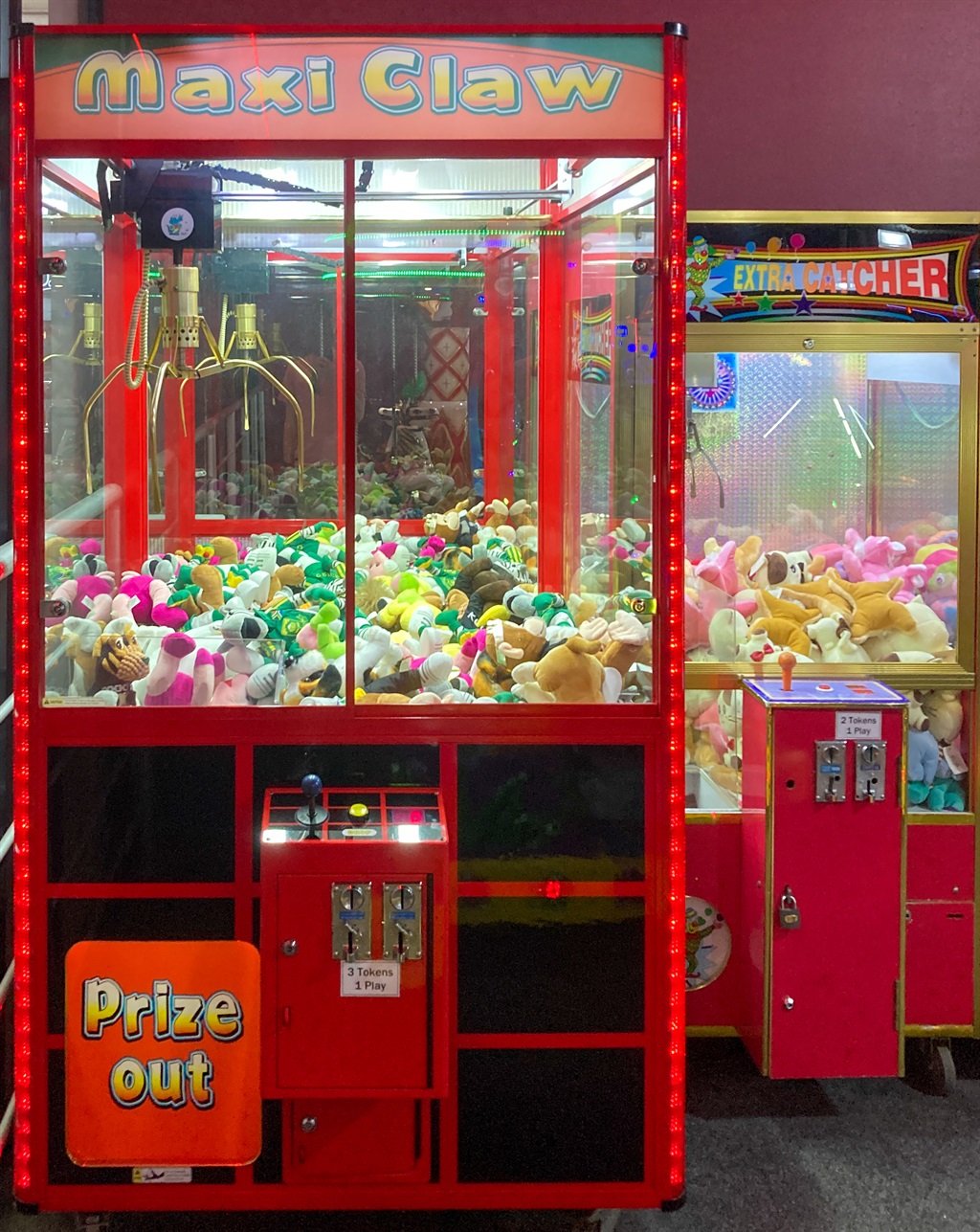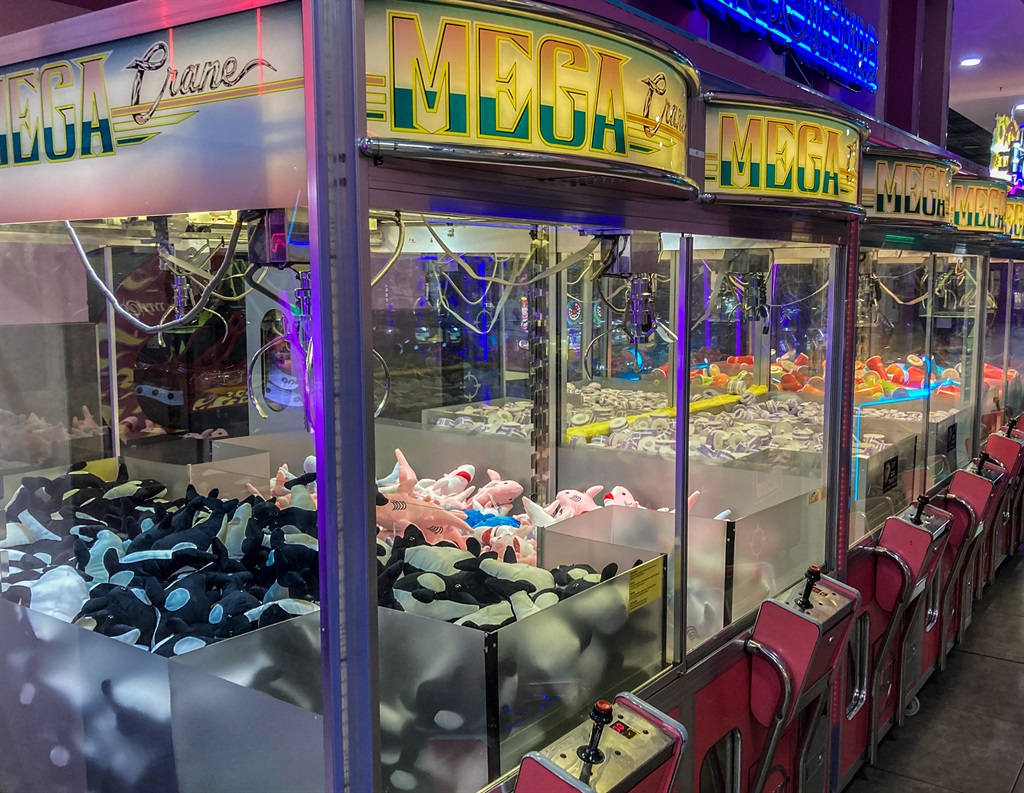News
Most claw machines in SA arcades can be rigged – and manuals show winning isn’t about player skill
- Claw machines used in popular South African arcades are almost certainly rigged to make a profit before they allow you to win.
- And despite what some players believe, winning a stuffed toy from a claw machine has little or nothing to do with skill.
- Claw machine operating manuals and internal documents for claw brands present in SA show how owners can set parameters like claw strength, when to drop a prize, and win ratios that guarantee a profit above anything else.
- For more stories, go to www.BusinessInsider.co.za.
Despite what many players claim, winning a prize from one of the claw machines so common in South African arcades little to no element of skill, documents intended for their owners show.
Winning has little to do with how the toys are stacked, or whether they’re easy to grab or not. Quickly getting a side view to ensure your claw is aligned correctly, as self-proclaimed experts may advise, is also fairly pointless.
The reason most people don’t win claw machines most of the time is likely far more calculated and cynical: most local claw machines are built to only deliver prizes under prescribed, preprogrammed conditions, usually when a device has made enough money to justify handing over a stuffed toy.
Every other time, you’re most likely feeding money into a machine that has no interest in how good you might be, as operating manuals for the many claw machines clearly show.
Claw machines: masquerading as a game of skill
Central to many complaints about the devices is that claw machines suggest to users that they are paying to play a game of skill. This is the message these claw machines have communicated since their mass-market inception in the 1920s, that with a bit of finesse and a good strategy, you have a fair opportunity to win a prize on every turn.
But unless you are winning on every paid turn – which is possible, under a rarely used setting in South Africa known as “Play Till Win” – claw machine owners have almost certainly set parameters that, at best, make it a game of some skill only once they’ve collected a stipulated profit.
And given the state of disrepair of some machines in South Africa, some of which are about 30 years old, you’ll be lucky if you enter into the realm of possibly winning a prize with many of them.
Game of skill versus game of chance
Some countries and parts of the USA and Canada have attempted to regulate claw machines.
In the 1950s, legislation in the United States labelled them gambling machines – but lobbying by carnival owners relaxed many of the initially strict laws and had officials renaming them “amusement devices”.
Measures still in place in some locations include governing prize value, clearly stating the win probability, removal of programmed profit ratios, and attempts to make it entirely a game of skill.
Many manufacturers also preemptively removed reference to the word “skill” from marketing and brand names as more people realised they were actually games of chance.
Despite this, crane machines are ubiquitous in South Africa, often adjacent to but outside the casino environment in arcades targeting children, and are overlooked by local gambling laws.
The closest equivalent in South African gambling legislation is for so-called “limited payout machines”.
Local legislation permitted 50,000 of these slot machines outside of casinos in South Africa –because they cost a maximum of R5 per turn and pay out maximum winnings of R500.
Of the claw machines checked by Business Insider South Africa, all cost between R6 and R12 per turn – well above that of the limited payout machines. Payouts, usually in the form of stuffed toys or equally cheap rewards, remain variable, but are likely to be below that of a single turn if imported in bulk.
Local claw machine manuals
Many machines in South African arcades are also entirely open to this manipulation.
To test this, Business Insider SA located the operating manuals from manufacturers of several claw machines on arcade floors in local casino complexes, resorts, and shopping malls.
The country’s two biggest arcade operators were unavailable or unwilling to comment on the record to Business Insider SA about whether their claw machines can be rigged, with one admitting he was aware it was possible to reduce voltage to the claw at certain points to ensure they drop prizes.
Another arcade network owner downplayed the matter by saying the plush toys have become too expensive to stock, the machines too difficult to repair, and their popularity too muted among the public to justify their presence on their floors. But a visit to one establishment the company oversees found at least ten claw machines in operation.
Many of the claw machines in local arcades are also very old, with some dating back to the mid-1990s. They are out of fashion elsewhere in the world as flashier devices with better settings to favour the house take over. But several are popular in arcade businesses here that tick all the boxes of profit-making machines.
One you will find in shopping mall arcades is the Maxi Claw. Business Insider SA played multiple turns on these machines and not once did the claw clamp hard enough to move one of the toys.
These are made by Taiwanese gambling and arcade company Paokai Electronic Enterprise Co. The manual for this machine has clear instructions for setting various parameters that make winning at times impossible or unlikely – despite teasing players to think they have beaten the system.
Most claw machines in South Africa’s most extensive arcade network come from Chinese company ELAUT, often under the brand name Mega Crane and Candy Man. These date back to the 90s and run on a circuit board called Eurograb, which some have described as easily rigged.
ELAUT makes claw machines that allow owners to control every aspect of the winning process. This includes only occasionally grabbing at full strength and automatically reducing grip power en route to delivering the prize – which is why machines often drop toys seconds after making a clean pickup.
ELAUT is widely known to have machines that count the win-to-loss ratio, which explains why if you play often enough and spend enough money, you’re likely to win – but only once you or a previous player has paid for the low-value prize several times over.
This also raises the possibility that a more generous operator might see more value in providing regular wins of cheap prizes than doing their best to hang onto the plush toys. Or that some machines may pay out more than others. But given that many ELAUT machines in South Africa cost around R12 per turn, it’s likely that the win ratio is higher than cheaper machines, given the low value of the prizes on offer.
Company documents show how to mislead players
An internal document from ELAUT for its Intelligrab operating system is unsubtle about its abilities. The document says players “must fall under the spell of the game” and make them appear as a game of skill.
“He must have the feeling that he controls the game, that the machine does what he wants and that the grab can pick up the merchandise easily, but that he played not accurate enough and wants to try again,” the document states.
It also touches on the positive business prospects that owners can manipulate to their advantage.
“As a operator, you must try to find the right proportion between both factors. Our experience teaches us that a payout-percentage from 25% to 40% gives the best results. To obtain this result, your machine is equipped with the most modern technology,” the document states.
These systems have two “essential qualities” – that it has a powerful claw with the potential to be “quick and accurate”, but “on the other hand the payment regulator that regulates that there is only won what is desired by the operator.”
Social media is keeping dreams alive – and revealing some scams
Despite the existing documentation showcasing how easily arcade owners can rig most claw machines, social media is ironically playing a significant role in keeping the classic arcade games in the spotlight.
Videos of people playing claw machines in arcades are big on YouTube, some with millions of views. And TikTok users regularly post videos with so-called “hacks” and tips to beat rigged claw machines – some of which have amassed up to 40 million views despite there being little veracity to their claims.
But one the most comprehensive and sober takedowns of arcade scams comes from YouTuber Mark Rober, whose videos about carnival scam science and other arcade scams have over 150 million views.






